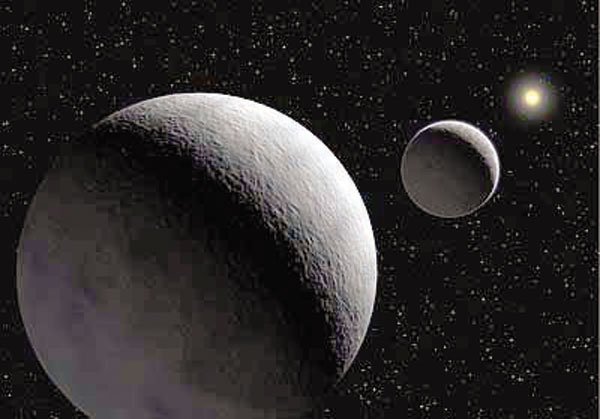Jan. 10: Colorful Evening
A colorful astronomical array surrounds the Moon this evening.
The yellow-orange star Capella is to its left, with orange
Aldebaran a little closer to its right. The blue-white Pleiades
star cluster stands to the upper right of the Moon.
By The University of Texas MacDonald Observatory
Jan. 10: Colorful Evening
A colorful astronomical array surrounds the Moon this evening. The yellow-orange star Capella is to its left, with orange Aldebaran a little closer to its right. The blue-white Pleiades star cluster stands to the upper right of the Moon.
Jan. 11: Jupiter in Libra
The planet Jupiter is standing atop the “balance scale” of the constellation Libra, near its brightest star, Zubenelgenubi. Jupiter rises in the southeast a few hours before sunrise, and looks like a brilliant star. Zubenelgenubi stands just to its right.
Jan. 12: Leo
Leo, the lion, springs into the evening sky this month. Its brightest star, Regulus, rises around 7:30 or 8pm, with the body of the lion following it into the sky over the next couple of hours. Denebola, the star that marks its tail, rises around 10pm.
Jan. 13: Wolf Moon
Look for the full Moon, known as the Wolf Moon, to shine orange or gold as it rises tonight, as the atmosphere scatters bluer colors and allows redder wavelengths to shine through. As the Moon climbs higher its light passes through a thinner layer of air, so it looks bluer.
Jan. 14: Moon and Saturn
The full Moon has a bright companion tonight: the planet Saturn. They rise shortly after sunset and soar high overhead later on. Saturn looks like a bright star that follows the Moon across the sky.
Jan. 15: Moon, Saturn, and Regulus
The Moon glides between the planet Saturn and the star Regulus tonight. All three are in good view in the east by about 9pm, and climb high overhead during the night. Saturn is to the upper right of the Moon as they rise, with Regulus farther below the Moon.
Jan. 16: Moon and Regulus
Regulus, the brightest star of Leo, the lion, is just to the lower right of the Moon as they rise this evening. In the wee hours of the morning, the Moon will pass just a degree or so from the star – the width of a finger held at arm’s length.














